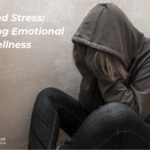Many companies need to understand and address these stress in organisation to create a healthy and supportive work environment for employees. Organisations can improve employee well-being and overall productivity by reducing stress levels among employees.
Five common factors of stress in organisation include:
- Workload: An excessive workload, with tight deadlines and high pressure, can increase employee stress levels.
- Workplace Relationships: Conflicts with co-workers, supervisors, or customers can create a stressful work environment and increase employee stress levels.
- Lack of work-life balance: Long work hours and a lack of time for personal and family life can increase employee stress levels.
- Job Insecurity: Uncertainty about job security or job stability can increase employee stress levels.
- Poor Management Practices: Poor management practices, such as micromanagement, lack of communication, or lack of recognition and appreciation, can lead to increased stress levels among employees.
The most common cause of stress in organisation is a lack of control. This stress is felt when we don’t have control over the situation and cannot apply a solution. We don’t need to stress out when there is a solution to a problem. Stressing out will only slow down the search for a solution. This is not good for our productivity. Instead, we should focus on finding an alternative solution to the problem.
What are the 7 sources of stress?
The sources of stress come in many different forms, and they are all rooted in situations and events. Some of them are obvious, while others are more subtle. The key to managing your stress is identifying the sources and developing strategies to address them. Let’s get started. First, let’s define what causes stress. Any of these factors can cause stress.
First, stress is the body’s natural defence against predators. It floods the body with hormones to prepare it for an encounter with danger. This fight-or-flight mechanism improves the body’s response to hazardous situations. A quick and effective response to a stressful situation will include a faster heart rate and heightened alertness. In severe cases, a person may experience chronic stress.
Second, stress can affect your mood. It can cause you to feel irritable, sad, or overwhelmed. Often, this stress is self-generated. It can also be a result of negative thinking or excessive worrying. When stress affects your mood, the body’s natural reaction is to become agitated. In addition to feeling irritable and downbeat, stress can make you feel restless and anxious.
What are the six main causes of stress?
The brain reacts to stress by setting off a warning system, which prepares the body for a defensive response. It releases hormones to strengthen muscles, increase pulse, and deepen respiration. These responses are part of a body’s “fight or flight” response to a threat. This response is pre-programmed biologically and occurs in most people in every situation.
A company’s management significantly impacts employee engagement and job satisfaction. Unsupportive, overbearing bosses are a common source of stress. Absentee or uncommunicative bosses also contribute to a sense of job dissatisfaction. Dealing with unreasonable demands is extremely stressful. In 2019, burnout was added to the World Health Organisation’s list of diseases, making it one of the most common causes of stress in organisations.
In addition to work-related reasons, stress is also caused by unpredictable, uncertain, unfamiliar, and ambiguous situations. Many performers and athletes use stress to push themselves to the limit and perform at their peak. Others use stress as a motivating factor and consider it a natural part of the working environment. The resources to manage stress in organisation includes coping skills, a supportive environment, and good management and employment practices.










